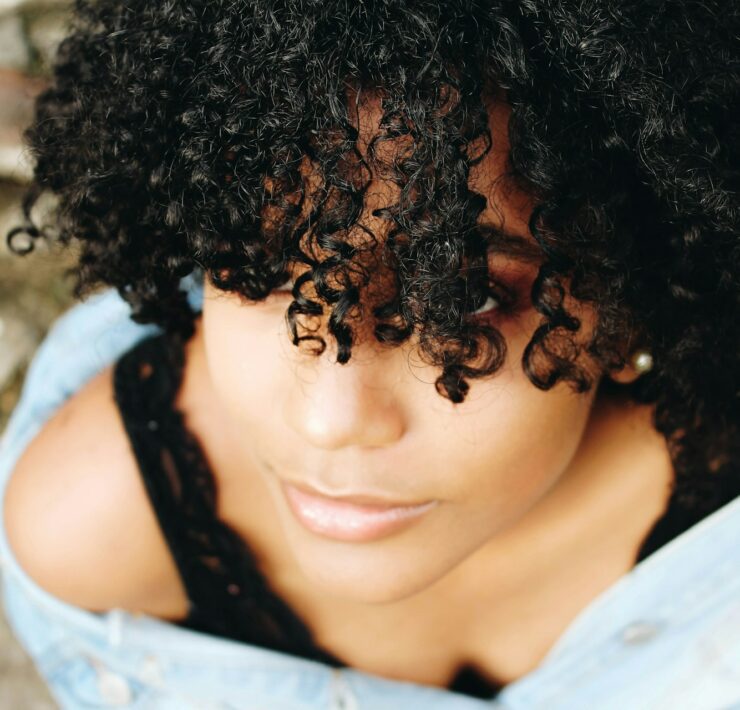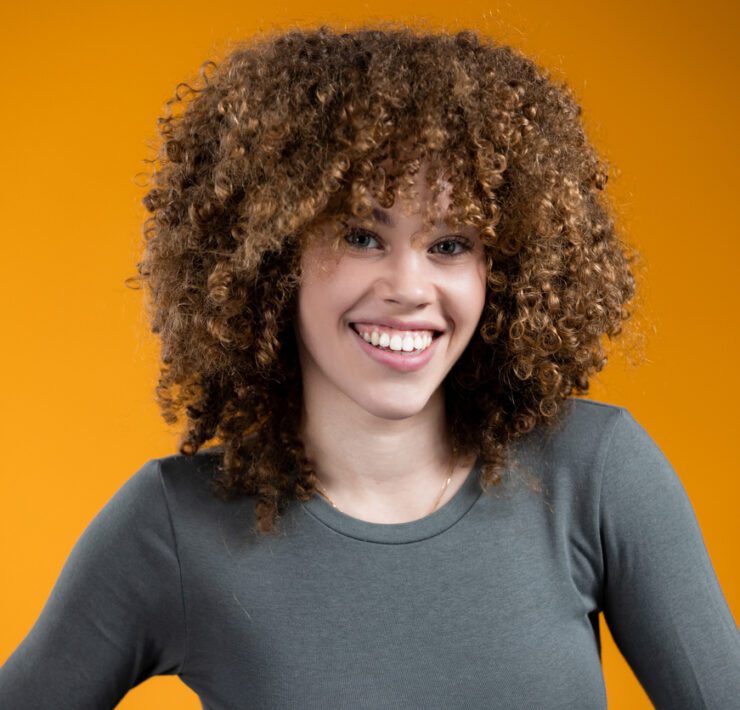
How can we achieve it?
You probably know that those who are serious about bodybuilding and fitness frequently rely on protein supplements to keep their muscles in top shape. Well, did you know that protein is not only essential for our bodies, but also for strong and healthy hair? Good hair care means not only ensuring that our hair is hydrated and moisturized, but also protein-rich. Achieving this balance of protein and moisture is key to any good hair care routine. How do you achieve this? Here are the necessary steps:
What does protein and moisture balance mean?
This balance refers to healthy hair which is nourished, hydrated by moisture, and strong because it has the proper protein content. It is healthy hair, meaning:
1: It is super shiny.
2: It is well moisturized and feels soft.
3: It is beautifully bouncy.
4: It is free of any annoying frizz.
5: It retains moisture.
6: It doesn’t break easily thereby maintaining length.
How is this accomplished?
Protein gives the hair strength and provides structure and shine to curls. It can patch gaps or weak parts of the hair strand and add stiffness to curls. All while allowing your hair to withstand and repair the damage caused by the stresses of everyday life. Over 90% of our hair is made up of protein, which can be reduced by stresses such as exposure to the sun, coloring, heat treatments, chemicals, etc. These all have the potential to damage your hair by slowly breaking down the protein in hair. This damage can be reversed by using good protein-based hair products to treat and care for our hair.
Aside from protein, your hair also requires moisture. Well-moisturized hair is soft, shiny, and luscious. However, hair can be over and under moisturized, it is important to strike a proper balance. Over moisturized hair has low elasticity, can make the hair limp, and have a gummy feeling when wet. While hair lacking moisture can become dull, develop frizz, and break off easily.
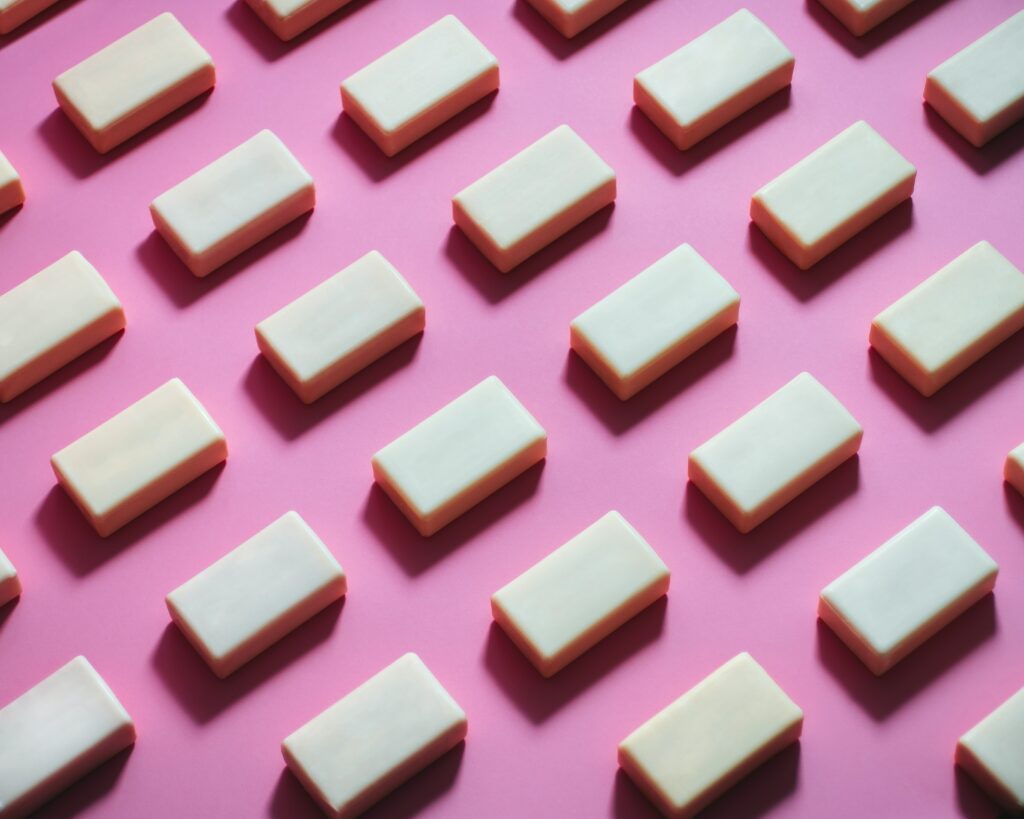
How do we know whether our hair needs moisture or protein or both?
Everyone’s hair is unique. Therefore, it is important to analyze your hair before being able to determine its specific and unique requirements. For this analysis, we are going to look at two main factors:
- Hair elasticity: Just as an elastic band, your hair can stretch and bounce back. The extent to which it can achieve this stretch and bounce back effect depends on how moisturized or hydrated your hair is. Test this by holding a strand of hair, taut between your fingers, stretch it gently and check to see if it bounces back. If it bounces back cleanly, it means you have good elasticity. Yay! If the hair is resistant, not flexible, and doesn’t stretch back, it is most likely brittle and will break. This means that your hair has low elasticity and that you need more moisture. Strands can sometimes even stretch quite a bit and then continue to stretch some more and finally not bounce back at all, falling back rather limp and weak. This means that you have too much moisture and poor elasticity. The lack of strength in this instance means that there is not enough protein and that there is moisture overload.
- Hair porosity: Hair porosity determines how well our hair absorbs and retains moisture. If your hair is healthy and undamaged with tight cuticles that do not allow too much moisture in, then you have what is typically known as low porosity. This kind of hair does not require a protein treatment as there isn’t any significant damage done to the hair. If you have normal or medium porosity hair, this means you have virginal or undamaged hair that has not had any color treatments, is easy to style, and is shiny. Your hair has a good balance of both moisture and protein. In this case, there is very little to do except maintain the quality. High porosity means that your cuticles are damaged or not tight enough, allowing too much moisture to creep in and out. Persistent heat and color treatments and damage basically mean that hair of this type can absorb moisture like a sponge, leaving it damp and limp. High porosity hair needs a lot of love and protein!
Hair porosity does not have to be uniform. Your roots may be low porosity while the ends of your hair or highlights can be high porosity. It is important to address the part of your hair that has high porosity and needs targeted help.
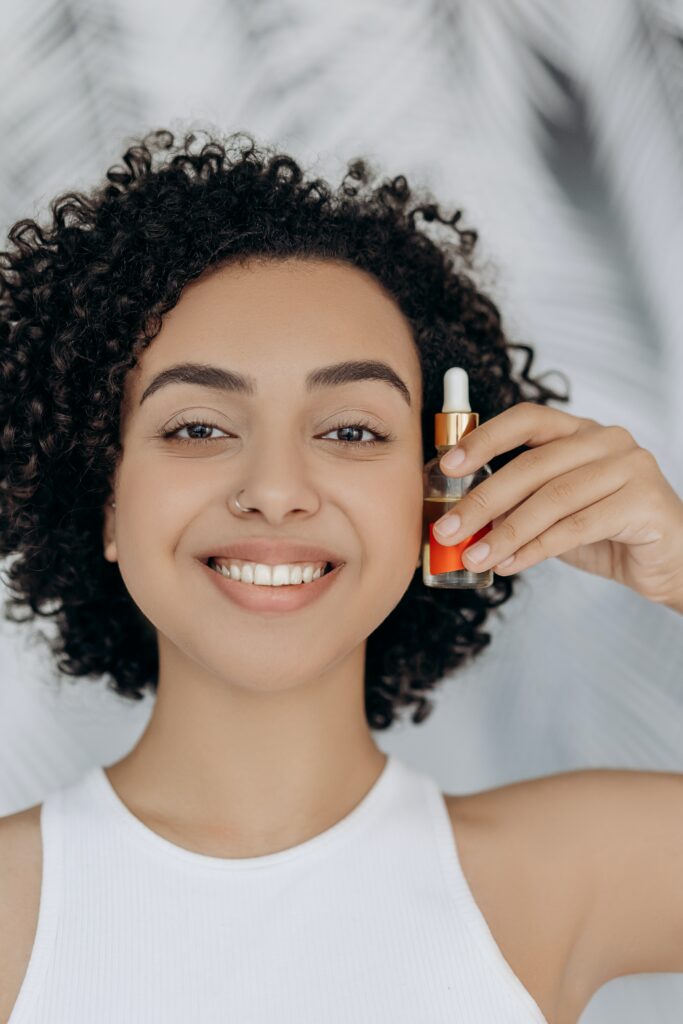
Let’s look at this quick and easy chart for some pro advice.
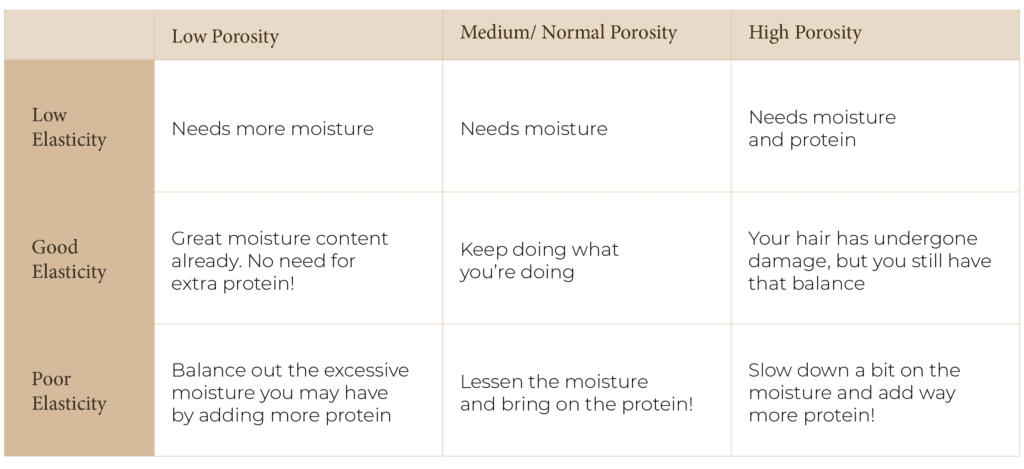
- How do we decide on products based on our hair’s needs?
What we put in our bodies helps determine how healthy our hair growth is. Hydrating sufficiently and consuming a diet that is rich in vitamins, proteins, and minerals is important for our overall health. Of course, we do experience stress in our lives, and we stress out our hair too! We style our hair using coloring agents, bleaching agents, and heat. All of these actions and factors impact the quality of our hair. So besides a nutritious diet, our hair also requires a little TLC.
Protein Rich Hair Products
How do you recognize if you need protein-rich products? If your hair has gone limp, you may need to use products that will add protein back into your hair. Look for products advertising strengthening, rebuilding, restructuring, repairing, enhancing, and nourishing.
In addition, there are other ingredients that indicate protein, such as:
- Amino acids
- Collagens
- Wheat proteins
- Oat proteins
- Milk proteins
- Soy proteins
- Silk proteins
- Keratin
- Quinoa seed extract
- Blue-green algae
- Cocoyl or potassium cocoyl hydrolyzed collagen/keratin
- Cocodimonium hydroxypropyl hydrolyzed collagen/ keratin/casein/ rice protein/ wheat or soy protein
- Neutral Protein Filler (NPF) by Colorful Products (NPF is a liquid protein additive with mostly hydrolyzed keratin and hydrolyzed wheat protein, and keratin amino acids)
Remember that some proteins form stronger bonds than others. Proteins such as wheat, oat, milk, rice, soy, silk, and quinoa seed extract can be excessive for those with low porosity or high elasticity hair. On the other hand, amino acids are more gentle on the hair and can be used safely. Research shows any proteins that have not been hydrolyzed are too large to penetrate into the hair shaft and instead bond onto the hair.
Moisturizing Products

Moisturizing products fall into three categories:
- Water – Main hydrating agent
- Humectants- Helps bind moisture to the hair
- Occlusives- Agents that help seal all the moisture in
While searching for moisturizing products, look for those that promise to soften, deeply moisturize, hydrate, and fight against frizz. Or look for products with the following ingredients:
- Coconut oil
- Panthenol
- Behentrimonium chloride
- Cetrimonium chloride
It is important to remember that water remains the number one ingredient for hydration. The other products are supplements to help further.
- How to create a routine that we can stick to?
Now you have analyzed your hair and purchased the right products. What’s next? It is time to create a routine to achieve and maintain healthy hair.
On any given day, some of us need four to five products for washing and styling our hair. We could use a) shampoo, b) conditioner, c) leave-in gels or serums, and d) mousse or gel for styling. If all or several of these products contain protein, it can quickly become excessive, especially for those with low or medium porosity hair. So, instead strive for a balance of both protein and moisture by following this handy, easy-to-follow guide below.
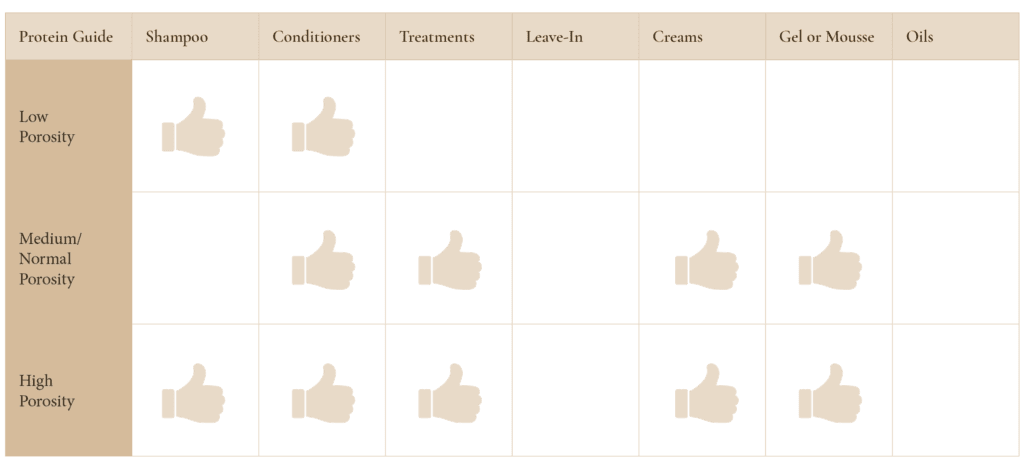
Here are some signs that you have added too much protein to your hair:
- Your hair feels too dry, straw-like, and is stiff
- Your hair is brittle and breaks easily
- Your hair looks dull and is rough to the touch
- You have lots of frizz
- Your hair does not stretch, low-elasticity
On the other hand, these are signs that you have over-moisturized your hair:
- Your hair is voluminous and fluffy
- Your curls are limp without hold
- Your hair feels mushy, and frankly gross
- Your hair is too soft and elastic
- Frizz, and lots of it
Luckily, both these overloads can be fixed quickly and easily.
If you have lathered on too much protein, simply use a good clarifying poo to wash it off and use a deep conditioning mask to hydrate. You could also moisturize your hair with oils before washing.
If you have overly moisturized hair, dry it before adding more moisture. Use a microfiber towel to absorb excess water or use a blow dryer gently. Once you have dried your hair, add a layer of protein-rich product on top.
Remember change does not happen quickly – so when trying new products and new techniques always allow your hair time to adapt!
Scientific Resources We Find Helpful:
https://science-yhairblog.blogspot.com/2015/10/protein-101-lots-of-basic-information.html


